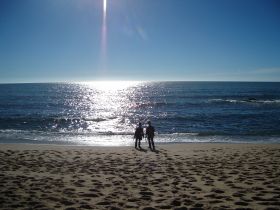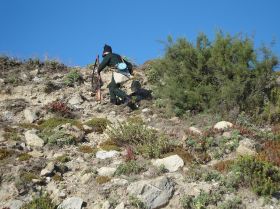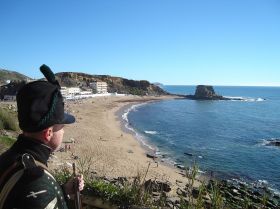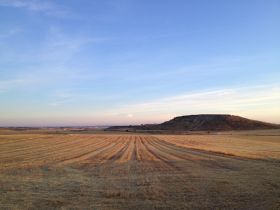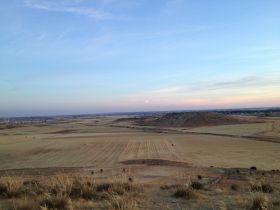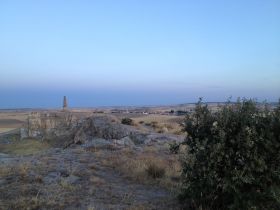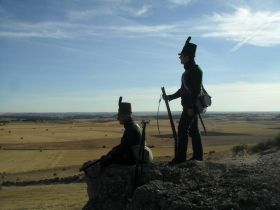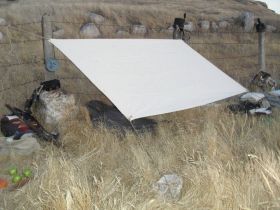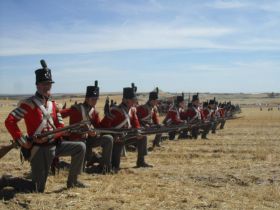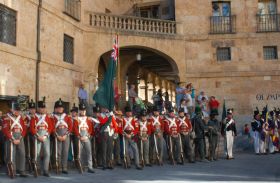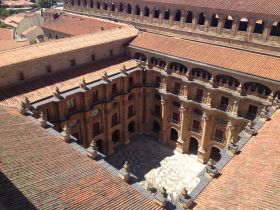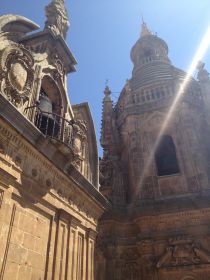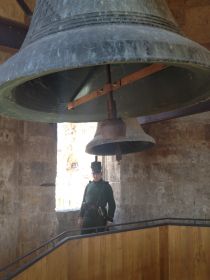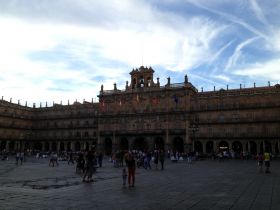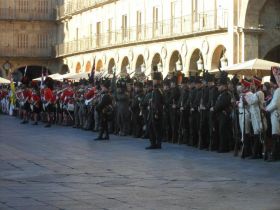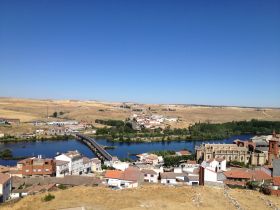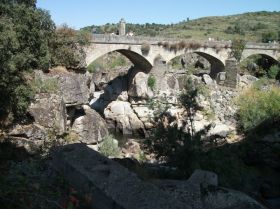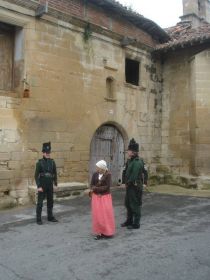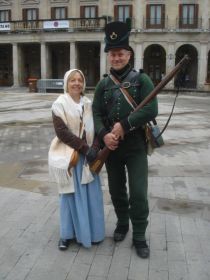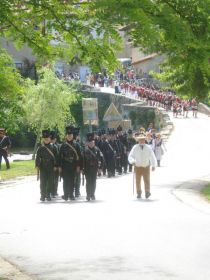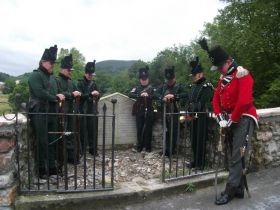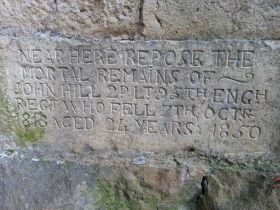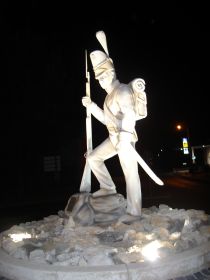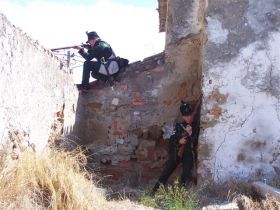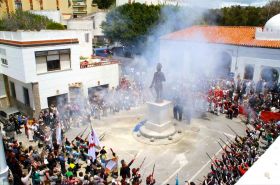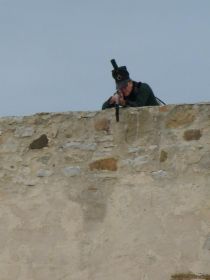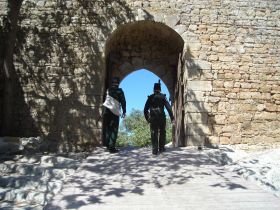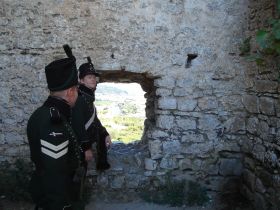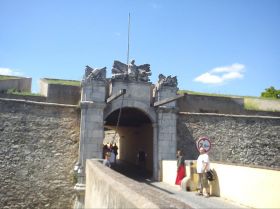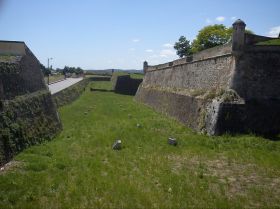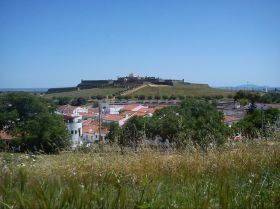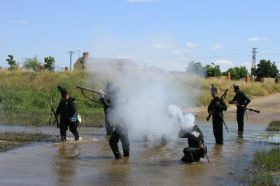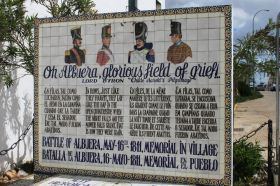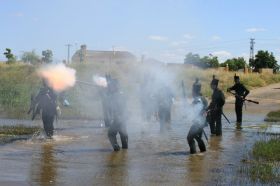Bicentennial Celebrations of the Peninsular War
From 1808-1813 the British army under Wellington fought alongside their Spanish and Portugese allies to push back the forces of Napoleonic France. At the bottom of the page you will find a brief history of the battalion's actions in the Peninsular War.
To give a flavour of our activities in Spain and Portugal here are a selection of images from bicentenial celebrations and our own excursions.
A Very Short History of the 2nd Battalion's Peninsular War
In 1805 a second battalion was added to the 95th Rifle regiment. After deployments to South America (1806) and Copenhagen (1807), some 400 men of the second battalion accompanied the expedition to Portugal under Sir Arthur Wellesley in 1808. Its first encounter with the French was near Óbidos, Lieutenant Bunbury was killed; the first officer casualty of the Peninsular War.
Two days afterwards, the corps was engaged at Rolica, where the French were driven from positions in the mountains, and four days subsequently they were again engaged at Vimiero, another British success. The Convention of Cintra followed this battle, and the British army marched to Lisbon where the 2/95th was joined by those companies of the 1/95th who had been under Sir John Moore in Sweden up to that point.
The remaining companies of the 2/95th and 1/95th landed in Corunna in late 1808. They were engaged on the retreat in skirmishes at Cacabellos (where Plunkett took his famous shot) and Lugo. While the 1/95th were present at the Battle of Corunna, a desperate and successful defence of the British beachhead disembarkation point, the 2/95th made their way to Vigo, slipping away from the French and disembarking unopposed for England.
The spring of 1809 saw the raising of a 3rd battalion, and drafts from the 2nd and 3rd Battalions were made to the 1/95th, which left once more for the Peninsula. The 2/95th went with the expedition to Walcheren the same summer, and took an active part in the operations, before returning home with ranks severely reduced by pestilential fever.
Several scratch companies of the 2/95th were sent out to Cadiz to assist in the defence of the town, which remained under siege by the French until 1812, during this period the 2/95th took part in the Battle of Barossa (1811).
As soon as the greater part of the second battalion was effective again, the remainder deployed to the Peninsula to form part of the famous Light Division, which was constantly engaged throughout the period of late 1810 when Lord Wellington left the lines of Torres Vedras and swept the French under Massena, out of Portugal. Multiple famous skirmish actions, including the defence of the bridge over the Côa for the 1/95th, culminated in the 1811 set piece at Fuentes d’Onoro, another British victory.
Two unsuccessful sieges of Badajoz in 1811 were followed by British successes at the fortresses of Ciudad Rodrigo and Badajoz in winter and spring of 1812. The 2/95th had its full share in each of these actions, storming important outworks at each fortress and at Badajoz suffering particularly heavy losses in the final breach storming parties.
Meanwhile a company of the 2/95th from the Cadiz detachments was spirited into Tarifa to defend the town. After repelling the French, the sieges of Tarifa and Cadiz were lifted by the French who evacuated their lines on receiving news of the victory at Salamanca. The 2/95th harassed the retreating French and then the Cadiz detachment took a Royal Navy taxi service to join the Light Division detachments who had been lightly engaged at Salamanca.
The 2/95th formed part of the rearguard during the retreat of Wellington’s army that ended 1812 on a low note, but performed with their customary panache in numerous small scale engagements, and were back in action with the advance guard for the campaign of 1813. All three battalions played a prominent role in the glorious battle of Vitoria. This defeat drove the French out of Spain, and the latter part of 1813 saw the 2/95th warm at work in the Pyrenees, forcing and defending mountain passes. Some detachments were sent to serve in the bloody conclusion of the siege of San Sebastian in August 1813.

